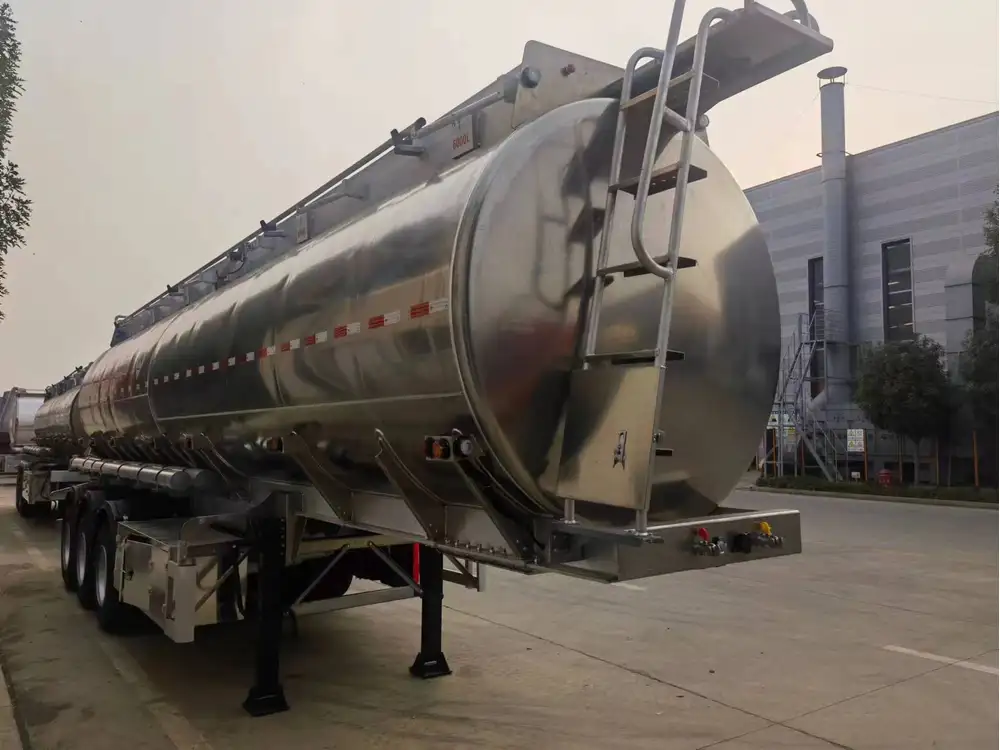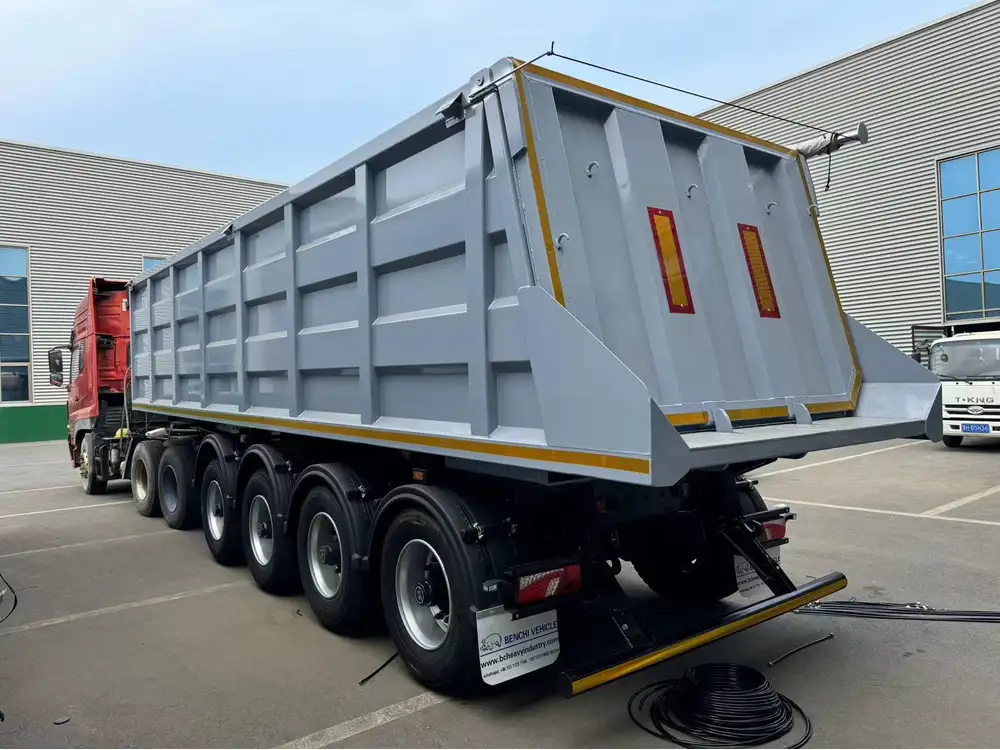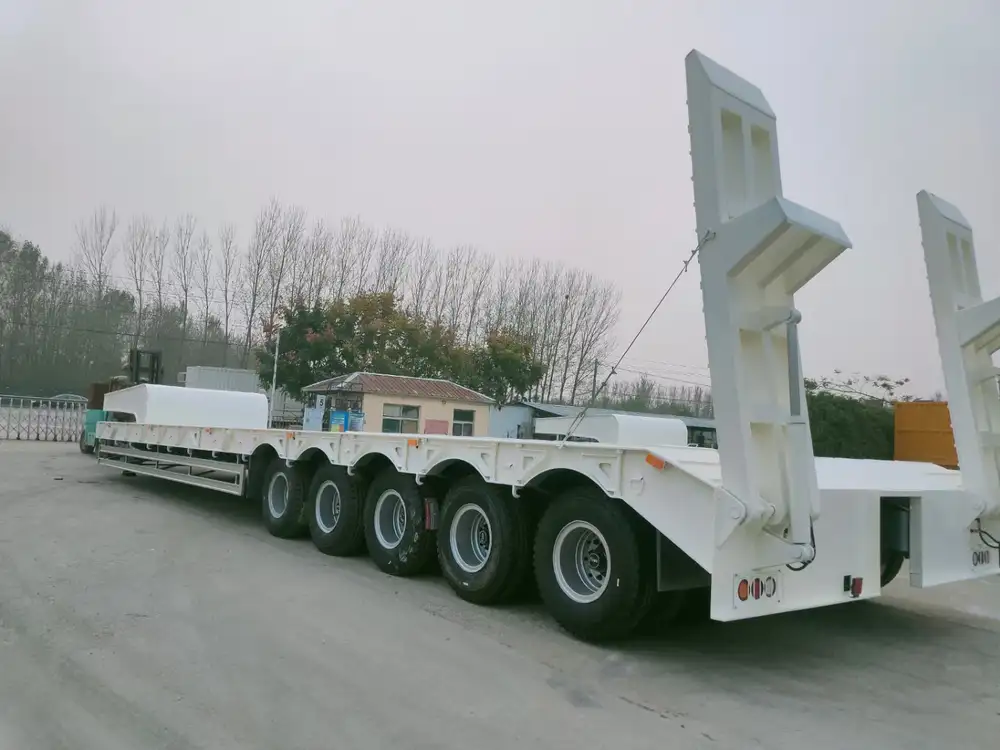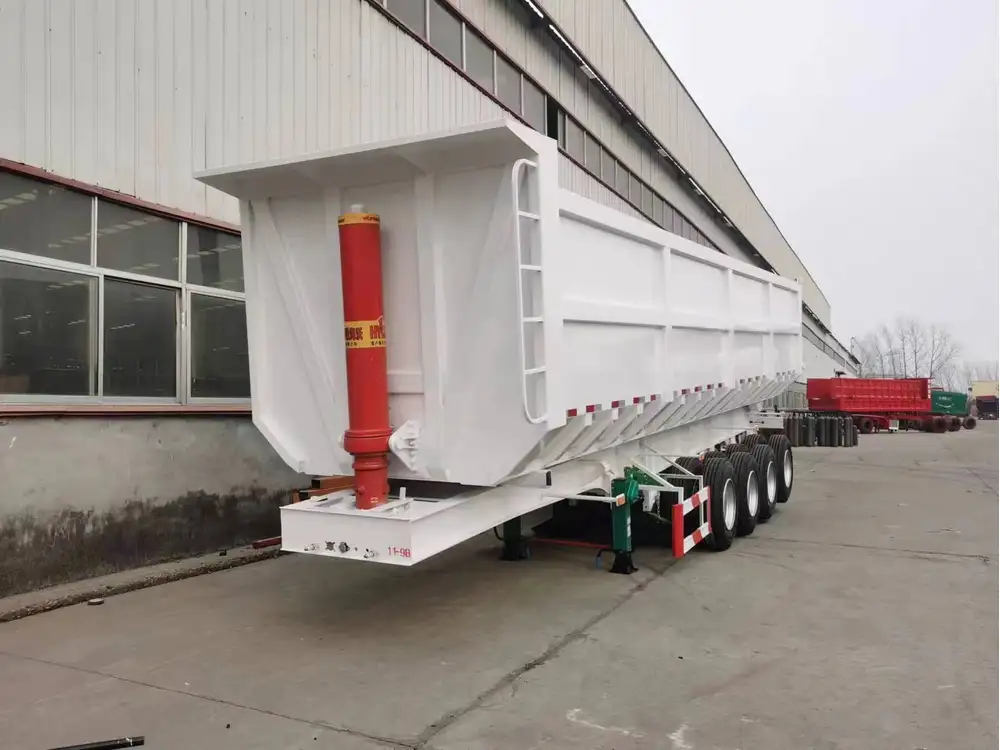Scaling a 4 axle dump trailer is a multifaceted task that requires a deep understanding of various factors. With the growing demand for heavy-duty vehicles in industries such as construction, mining, and waste management, the ability to efficiently scale these trailers becomes essential for maximizing productivity and compliance. In this guide, we will dissect this process into clearly defined sections, addressing critical aspects that influence scaling, operational challenges, and solutions.
Understanding the Basics of a 4 Axle Dump Trailer
Before diving into the complexities of scaling, it’s vital to establish a foundational knowledge of a 4 axle dump trailer. This configuration typically features:
- Four Axles: Offering superior load distribution and stability.
- Dump Mechanism: Enabling the quick unloading of materials, typically operated hydraulically.
- Size and Capacity: Designed to carry heavy loads, often up to 24 tons, depending on the regulations in the specified area.
Technical Specifications Table
| Feature | Description |
|---|---|
| Axles | 4 |
| Gross Vehicle Weight | Up to 80,000 lbs (varies by regulations) |
| Typical Payload | 15-24 tons |
| Body Length | 12-18 feet |
| Dump Angle | Up to 60 degrees |

Factors Affecting the Scaling of a 4 Axle Dump Trailer
Scaling a 4 axle dump trailer efficiently requires consideration of several interrelated factors. These elements, when addressed prudently, can dramatically enhance operational efficiency.
1. Weight Distribution
The distribution of weight across the axles directly impacts the trailer’s performance. An uneven load can lead to increased wear and tear, reduced fuel efficiency, and possible regulatory fines.
Solutions:
- Load Planning: Utilize load calculators to ensure an even distribution.
- Practices: Conduct pre-trip inspections to verify weight balance.

2. Regulatory Compliance
Adhering to state and federal regulations regarding weight limits is non-negotiable. Exceeding these limits can result in heavy fines and operational delays.
Solutions:
- Know the Limits: Familiarize yourself with the Federal Highway Administration weight limits and specific state restrictions.
- Scale Usage: Utilize certified truck scales at terminals or weigh stations to check compliance.
3. Trailer Specifications and Configurations
Choosing the right trailer specifications is crucial for scaling effectively. Factors like axle spacing, suspension type, and wheelbase can play significant roles.

Solutions:
- Configuration Options: Consider adjustable suspension systems to fine-tune height and weight distribution.
- Upgrade Trailer Features: Explore options for trailers designed specifically for heavy payloads.
4. Material Characteristics
The type of material being transported can significantly affect the trailer’s scaling. Different materials have varying densities, which directly translates to weight.
Solutions:
- Material Classification: Classify materials for efficient loading and unloading.
- Utilization of Load Sensors: Employ load sensors to automatically gauge and adjust load settings.

5. Driving Techniques
The manner in which a dump trailer is operated can influence scaling. Skilled operators can maximize efficiency by understanding their vehicle’s limits.
Solutions:
- Training Programs: Engage drivers in specialized training focusing on load handling and vehicle control.
- Best Practices: Encourage operators to know their trailer’s load capacity and handling characteristics.
Practical Steps to Efficiently Scale Your 4 Axle Dump Trailer

Step 1: Prepare the Load
Checklist Before Loading:
- Measure Materials: Use volume measurements to determine weight potential.
- Prioritize Heavy Materials: Load heavier materials first, distributing weight from front to back.
Step 2: Load Distribution Techniques

Tips for Even Distribution:
- Use Barriers: Implement physical barriers in the trailer bed to prevent shifting.
- Stacking Methods: Utilize uniform stacking to prevent sudden shifts while driving.
Step 3: Weighing Procedures
Step-by-Step Weighing:
- Initial Weigh-In: Before loading, weigh the empty trailer to establish a baseline.
- Post Load Weigh-In: Weigh the trailer after loading to confirm compliance with limits.
- Adjustment: Should weight approaches exceeding limits, adjust the load (unload excess or rearrange).

Step 4: Monitor While Driving
Usage of Technology:
- Onboard Weighing Systems: Invest in technology that allows for real-time weight monitoring.
- GPS Tracking: Use GPS systems to manage routes based on weight restrictions before departure.
Challenges in Scaling 4 Axle Dump Trailers: A Deeper Dive

Overloaded Trailers: The Hidden Dangers
Overloading not only heightens the risk of regulatory penalties but can jeopardize the safety of all road users. The repercussions include:
- Increased Stopping Distances: Heavier loads require more time and space to stop, escalating accident risks.
- Axle Damage: Continuous overloading can lead to cracked or bent axles, resulting in costly repairs and downtime.
Mitigating Overload Risks
Initiatives to Implement:
- Routine Maintenance: Regular checks on trailer components and axles can preemptively mitigate overload issues.
- Weight-Based Maintenance: Tailor maintenance schedules based on the tonnage typically transported, rather than standard intervals.

The Impact of Road Conditions
Adverse road conditions can aggravate issues arising from poor scaling:
- Uneven Terrain: Ascending hills and navigating rough environments can destabilize improperly loaded trailers.
- Weather Elements: Rain or snow can further complicate weight distribution and control.
Conclusion: Streamlining the Scaling Process
Scaling a 4 axle dump trailer is not merely a mechanical task; it encapsulates a sophisticated interplay of engineering accuracy, operational wisdom, and strategic compliance. By understanding the intricate web of factors influencing load scalability, manufacturers and operators will be better equipped to optimize performance, enhance safety, and maintain regulatory standards.
As the industry evolves, enhancing scaling methodologies through technology adoption and education remains paramount. Whether it’s implementing onboard tools for real-time weight management or revising operator training, every step taken advances the goal of achieving a seamlessly scalable 4 axle dump trailer operation.
Key Takeaways
- Efficient scaling necessitates careful consideration of weight distribution, regulatory compliance, and material characteristics.
- Employing technology and skilled operational practices can drastically enhance scaling effectiveness.
- Regularly reviewing and updating protocols ensures that safety and efficiency are consistently prioritized.
By following these guidelines and embracing a holistic approach to trailer scaling, we can ensure our operations thrive, maintain compliance, and lead the industry in best practices.



